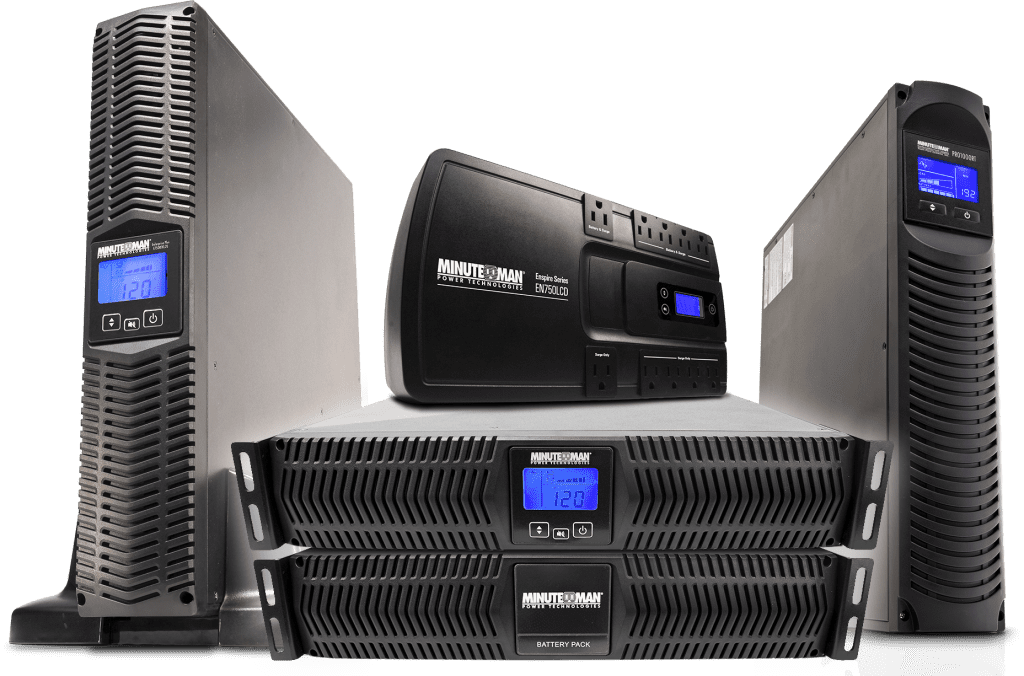Many customers still have questions about “why” the need for a UPS. This post will help you understand the importance of a UPS, some basic functions of a UPS, and a simple approach to choosing the right UPS.

Why a UPS?
In a simple sense — Uninterruptible Power Supplies (UPS) provide short-term emergency backup power in the event of any disturbances or disruptions to the main utility power supply.
The UPS has two primary goals:
- Provide clean, continuous power to connected devices
- Provide extended runtime when utility power is at a total loss
The reality is that an unexpected power event, or disruption, to mission-critical networks and other connected devices can lead to severe damages, total data loss, and extended downtime, which can potentially cost businesses thousands of dollars in sales and hours of lost productivity.
Basic Functionality of a UPS
A UPS uses stored energy (internal batteries) to generate and maintain power to the connected load when there is a disruption to the main utility power supply.
The battery runtime (or autonomy) of most UPS solutions is relatively short. The UPS battery backup function is designed to provide enough time for the connected devices to safely shut down or for an alternative power source, such as an onsite backup generator, to take over.
Depending on your backup power needs, a UPS can offer three different levels of power protection.
Most UPS solutions can correct a wide range of common power problems, such as:
- Sags: short periods when voltage is below normal utility power supply level
- Brownouts: undervoltage like a sag, but over a longer period
- Power Surges: an unexpected increase in voltage, typically caused by an event such as lightning
- Harmonics: a distortion to an ideal sinusoidal waveform
- Spikes: very short, but extremely damaging, bursts of energy from the utility power source
To learn more about the basics of a UPS, please watch our video Three Types of UPS Technologies
How to Choose a UPS
Unless you are an expert in backup power solutions, choosing the right UPS can seem like a daunting task. However, understanding some of the basic information you need to choose the right UPS solution can make the process a little easier.
Item list to assist in choosing the right UPS solution:
- What are you protecting?
Understanding what is mission-critical to you is very important. Make a list of the connected devices that absolutely need backup power protection and extended runtime.
- The environment the UPS will be installed in
It is important to understand where your UPS will be installed. Is it going to be a tower unit? Do you have an IT rack where you will need to install the UPS? Is the room/closet climate controlled?
- What type of UPS do you need?
As previously mentioned, there are three types of UPSs: Standby, Line Interactive, and Online UPS. Depending on the level of sensitivity of your connected devices and runtime will determine what UPS is best for your backup power needs.
- Do you need additional outlets or network management?
Depending on how many devices you need protecting, a UPS is limited to the availability of outlets for your connected devices. Luckily, there are Basic Power Distribution Units (PDUs) and Switched PDUs that you can choose to make sure all your mission-critical devices are protected.
Additionally, most UPS systems will offer an optional network card slot, or SNMP, to remotely monitor and manage your network devices. - How much runtime will your backup solution require?
Not every UPS is created equal. The basic UPS system will offer a few minutes of extended runtime. However, UPS solutions, such as Line Interactive and Online UPS, can offer extended runtime solutions by connecting external battery packs to your UPS system.
If you need help choosing the right UPS solution, please make sure to reach out to our friendly UPS experts via Contact Us or email at sales@minutemanups.com








